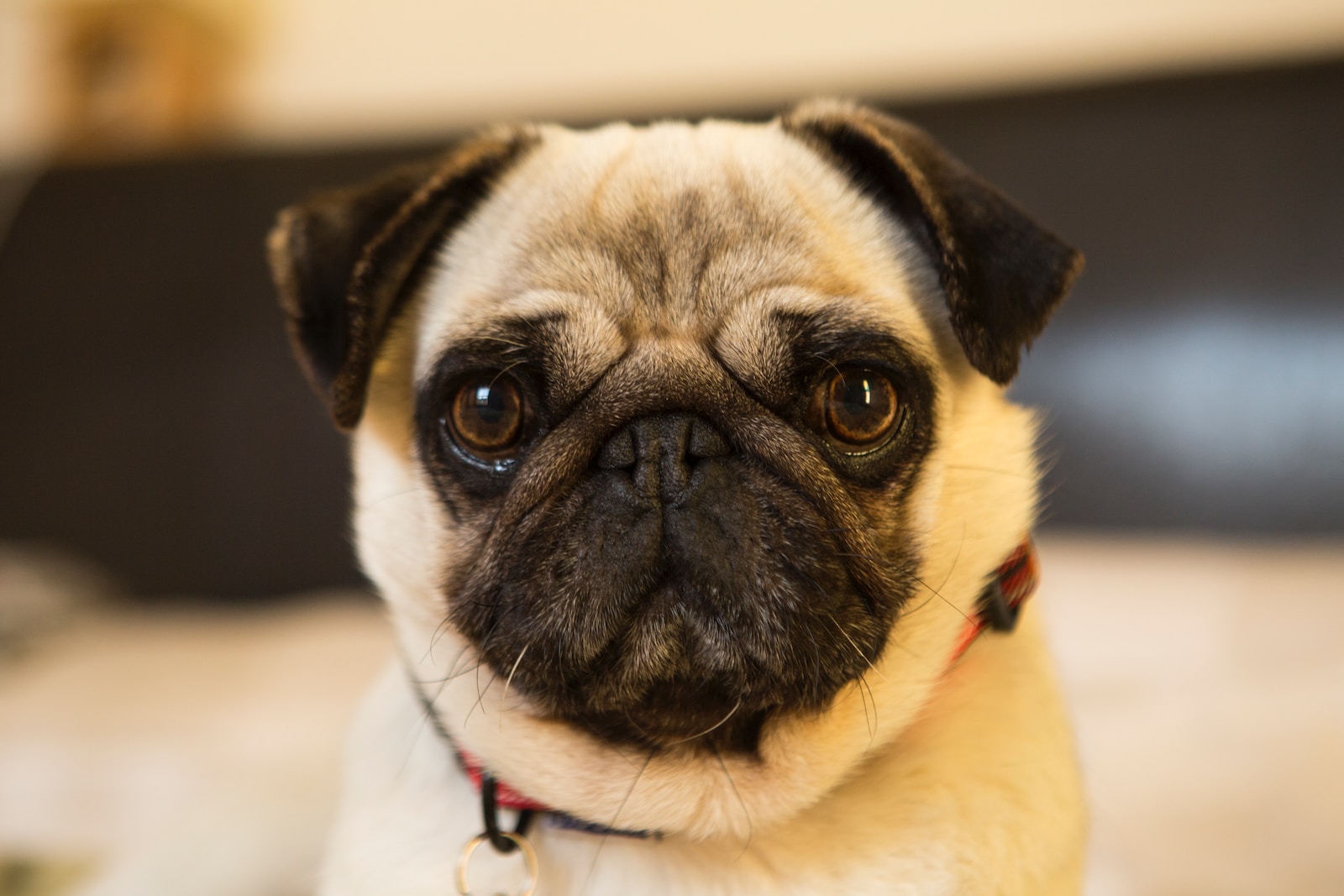Introduction Pugs, with their adorable wrinkled faces and charming personalities, have found a special place...

Understanding Pug Breathing Problems: Signs, Causes, and Treatment
Introduction
Pugs are delightful and adorable companions, known for their charming personalities and distinct physical features. However, one common issue that pug owners often encounter is breathing problems. Pugs have a unique anatomy that predisposes them to respiratory difficulties, and it’s essential for every pug owner to understand the signs, causes, and treatment options for these breathing problems. In this comprehensive guide, we will delve into the world of pug breathing problems and provide valuable insights to help you better care for your furry friend.
Understanding Pug Breathing Problems: Signs, Causes, and Treatment
Pug breathing problems encompass a range of conditions that affect the respiratory system of these lovable canines. These problems can significantly impact their quality of life and require prompt attention and appropriate management. Let’s explore the signs, causes, and treatment options associated with pug breathing problems.
Signs of Pug Breathing Problems
Pugs suffering from breathing problems may exhibit various signs that indicate respiratory distress. It’s crucial for owners to recognize these signs early on to ensure timely intervention. Some common signs of pug breathing problems include:
Labored Breathing: Pugs with respiratory issues often display labored breathing, characterized by rapid and shallow breaths. You may notice their chest heaving as they struggle to take in enough air.
Snorting and Snoring: Pugs are notorious for their snorting and snoring sounds, which are often attributed to their brachycephalic (short-nosed) anatomy. However, excessive snorting and snoring can indicate an underlying breathing problem.
Gagging and Coughing: If your pug frequently gags or coughs, it could be a sign of respiratory distress. These actions are often accompanied by attempts to clear the airways.
Exercise Intolerance: Pugs with breathing problems may find it challenging to engage in physical activities. They may tire quickly, pant excessively, or even collapse during exercise.
Cyanosis: In severe cases, pugs may develop cyanosis, characterized by a bluish discoloration of the gums, tongue, or other mucous membranes. Cyanosis indicates a lack of oxygen in the bloodstream and requires immediate veterinary attention.
Causes of Pug Breathing Problems
Understanding the underlying causes of pug breathing problems is essential for effective management. Here are some common factors that contribute to these respiratory issues:
Brachycephalic Syndrome: Pugs belong to a brachycephalic breed, characterized by their short muzzle, flattened face, and elongated soft palate. This conformational trait can obstruct the airways, leading to breathing difficulties.
Stenotic Nares: Pugs often have narrow nostrils, a condition known as stenotic nares. These constricted nasal passages restrict airflow, making it harder for them to breathe properly.
Elongated Soft Palate: The soft palate in pugs is longer than normal, partially blocking the airway. This elongation can cause snorting, snoring, and breathing difficulties.
Tracheal Collapse: Pugs are prone to tracheal collapse, a condition where the windpipe loses its rigidity and collapses during breathing. This collapse further restricts the airflow, leading to respiratory distress.
Obesity: Excessive weight can worsen breathing problems in pugs. The additional weight puts extra strain on their respiratory system, making it even more challenging for them to breathe.
Treatment Options for Pug Breathing Problems
When it comes to managing pug breathing problems, early intervention is crucial. Various treatment options are available to alleviate the symptoms and improve the quality of life for pugs. Here are some commonly recommended approaches:
Surgical Intervention: In cases of severe respiratory distress, surgical procedures may be necessary. These procedures aim to correct anatomical abnormalities, such as stenotic nares or an elongated soft palate. Surgery can significantly improve the airflow and alleviate breathing difficulties.
Weight Management: If your pug is overweight, implementing a weight management plan is essential. Consult with your veterinarian to develop a balanced diet and exercise regimen tailored to your pug’s needs. Shedding excess pounds can relieve strain on the respiratory system and improve breathing.
Medications: Your veterinarian may prescribe medications to manage the symptoms associated with pug breathing problems. These medications can help reduce inflammation, alleviate coughing, and improve breathing capacity.
Environmental Modifications: Creating an environment that promotes optimal breathing is crucial for pugs with respiratory issues. Ensure proper ventilation, maintain a cool and comfortable temperature, and minimize exposure to irritants such as smoke, dust, and allergens.
Lifestyle Adjustments: Making certain lifestyle adjustments can greatly benefit pugs with breathing problems. Avoid strenuous exercise, limit exposure to extreme temperatures, and provide plenty of opportunities for rest and relaxation.
FAQs (Frequently Asked Questions)
Q: Can pug breathing problems be cured?
A: While pug breathing problems cannot be completely cured, they can be effectively managed. With appropriate treatment and lifestyle modifications, pugs can lead happy and fulfilling lives despite their respiratory challenges.
Q: How can I prevent pug breathing problems?
A: While you cannot prevent pug breathing problems entirely, there are steps you can take to minimize the risks. Ensure regular veterinary check-ups, maintain a healthy weight, provide a well-ventilated living environment, and avoid exposing your pug to excessive heat or extreme temperatures.
Q: Are pug breathing problems common?
A: Yes, pug breathing problems are relatively common due to their brachycephalic anatomy. It’s important for pug owners to be aware of these issues and take proactive measures to address them.
Q: Can pugs with breathing problems live a normal lifespan?
A: With proper care, pugs with breathing problems can lead relatively normal lives and enjoy their usual lifespan. It’s crucial to work closely with your veterinarian and follow their recommendations for managing your pug’s respiratory condition.
Q: Can pug breathing problems worsen over time?
A: Yes, if left untreated or poorly managed, pug breathing problems can worsen over time. It’s important to seek veterinary care at the first sign of respiratory distress to prevent further complications.
Q: Are all pugs prone to breathing problems?
A: While not all pugs experience severe breathing problems, the majority of the breed is predisposed to respiratory issues due to their brachycephalic conformation. It’s essential for pug owners to be vigilant and proactive in managing their pug’s respiratory health.
Conclusion
Understanding pug breathing problems is crucial for every pug owner. By recognizing the signs, understanding the causes, and exploring the available treatment options, you can provide the best care for your pug and help them live a comfortable and fulfilling life. Remember to consult with your veterinarian for personalized advice and guidance tailored to your pug’s specific needs. With proper management and your love and care, your pug can thrive despite their respiratory challenges.
Pug Digging Solutions: Curbing Your Pug’s Digging Instincts
Introduction If you are a proud owner of a charming pug, you must be well-acquainted...
The Five Best Dog Trackers – Never Lose Your Dog Again
Introduction As a responsible pet owner, ensuring the safety and security of your furry friend...
Introduction Pugs are adorable and affectionate pets that bring joy to millions of households worldwide....
Disclaimer,
We are not dog professionals, for the ultimate in Dog advice please contact the BVA by clicking the link below,
https://www.bva.co.uk/pet-owners-and-breeders/advice-for-pet-owners/











